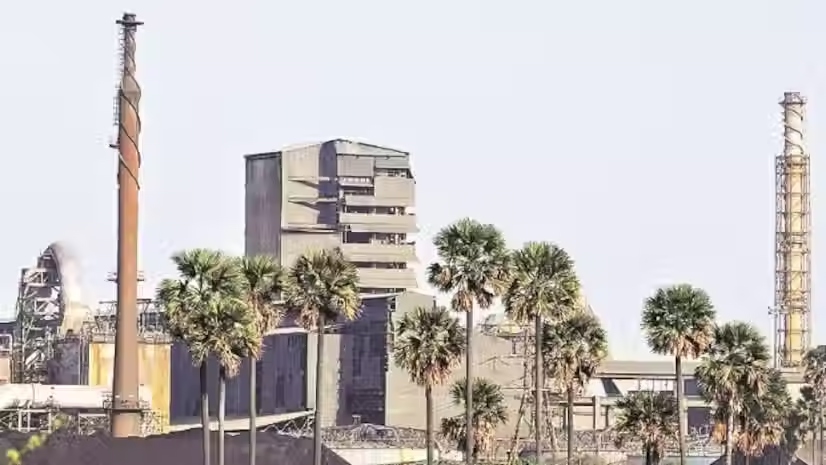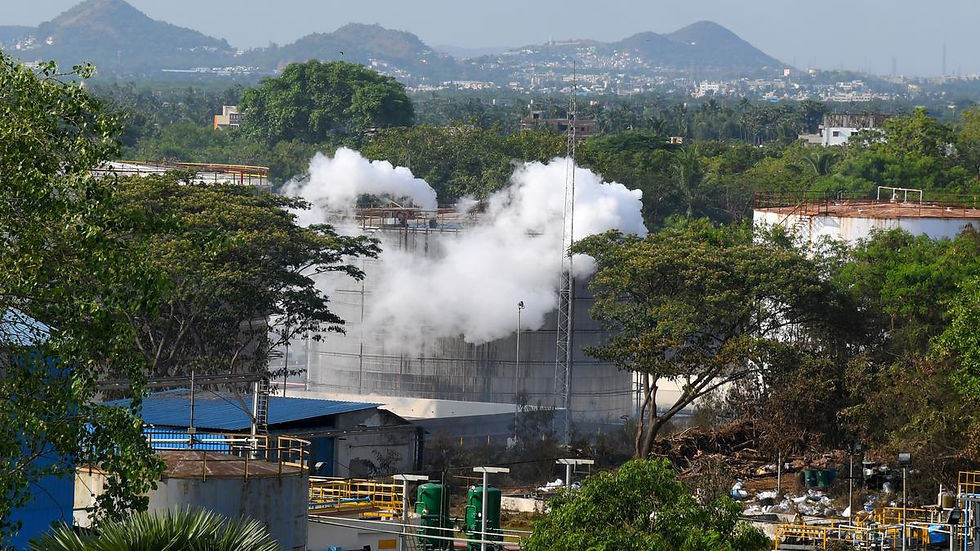Risky Realities Of Industrial Areas
- connect2783
- May 1, 2023
- 2 min read
Updated: Jun 5
Ten years after the toxic gas leak in Thoothukudi, industrial safety in India remains a pressing issue. Despite regulations like the Occupational Safety Code, incidents keep occurring, often hitting workers the hardest, revealing gaps in implementation, enforcement, and risk management. As industries expand into smaller cities with evolving regulations, how prepared are they to handle potential hazards?

The 23rd of March this year marked the 10th anniversary of the horrific incident that took place in Thoothukudi in 2013 when a copper smelter plant released toxic fumes that descended over the whole city. Thousands of citizens experienced suffocation and burning sensations in their eyes, and had to be hospitalised.
This wasn’t the first accident that took place there. In 1967, twenty workers in a nearby factory had to be hospitalised because of a leak. After this, the district collector closed the plant, but it was reopened as the evidence was ‘inconclusive’.

In Vizag, a chemical plant situated on the outskirts leaked a gas called ‘styrene’ in 2020. Its effect killed 12 people and hospitalised hundreds.
Industrial accidents occur often in India. In the last decade, 130 significant chemical accidents have been reported, which resulted in 259 deaths and left 563 with major injuries, as per the National Disaster Management Authority’s data. These cases make us question the industrial safety standards that are in place. The Chemical Accidents (Emergency Planning, Preparedness, And Response) Rules lay out guidelines to deal with such types of incidents. Although, it might be concerning that the rules haven’t been updated since 1996.
The majority of these incidents affect the workers the most.
According to data collected by a global workers’ union, ‘IndustriAll’, sectors such as manufacturing, chemicals, and construction report the most fatalities in India.
In 2021 alone, it said an average of 7 accidents were reported every month in Indian manufacturing industries, killing more than 162 workers.
In 2020, 13 laws like the Factory Act, 1948; Migrant Workers Act, 1979; and the Beedi and Cigar Workers Act, 1966, etc., were consolidated to form ‘the Occupational Safety, Health, and Working Conditions Code, 2020’. The code generalises the relationship between workers and capital across various industries and regulates their health, safety, and working conditions. It also aims to provide workers with wage security, social security, safety, health, and grievance redressal mechanisms.
Do you think your city may be prone to an industrial hazard?
Yes
No
Comments